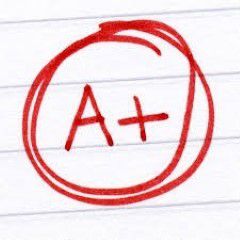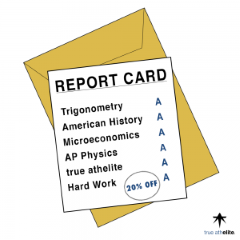FNCE 322 v4 Assignement 1
Assignment 1
Assignment 1 is due after Lesson 5 and is worth 10% of your final mark. The plan should be approximately 8 to 10 pages in length, including a balance sheet and an income statement. The exact length is less important than thorough, but succinct, coverage of the topic.
In Assignment 1, you will integrate the concepts and calculations from the course with your own financial planning.
The assignment has two parts. Read through all of Assignment 1 before you begin. Review the Assignment 1 Tips at the end of the assignment instructions.
Be sure to show all of your math or calculator keying sequences to support your calculations. This will help your marker provide valuable feedback to you for examination preparation.
In Part A, you will construct a timeline outlining the goals you wish to accomplish between now and the end of your life, the cost of those goals, and the savings needed to achieve them.
In Part B, you will outline tax-planning strategies you will use to maximize your after-tax income to better facilitate accomplishing the plan you outline in Part A.
Part A: Financial Planning Timeline (3 steps)
Step 1—Draw the Timeline
Draw your own financial planning timeline. On the timeline, show the years between now and the year of your estimated death. (Mortality tables and family history may help you estimate your lifespan.) On the timeline, in the proper year, plot significant financial events and goals. Consider the major events that might occur in your life. At a minimum, include the four goals outlined in Step 2 below.
A sample timeline (see the PDF on Assignment page) is provided as a reference. Note that the sample timeline does not show dollar amounts and that major events in the sample are highlighted with superscripts.
As with the sample, your timeline will not include dollar amounts. Use superscripts to indicate which events and goals are supported by notes and calculations (the financial planning details you develop in Step 2).
Step 2—Goals in Detail
Provide details for each goal on your timeline. Refer to each goal by the number you used as a superscript in your timeline. In your discussion
•describe each goal very briefly
•estimate its cost and explain how you arrived at the amount. Be sure to research and reference your sources; for example, for housing research, indicate the inflation applicable to your area, or for education, estimate the inflation rates specific to post-secondary education. Provide a breakdown of such costs as travel expenses for a vacation goal.
•state how you have dealt with inflation
•outline any assumptions you made.
You will have to consider the lifestyle expectations you have for your working life and your retirement. You may find your parents, siblings, grandparents, and spouse helpful in thinking through your goals and in quantifying them.
Be sure to include the four goals listed below; additional goals will be the result of your unique preferences. We recognize that you may not have all the goals below in your personal life. However, all four goals should be included in this assignment, even if they are hypothetical. The objectives of this assignment are for you to learn the steps required in setting and planning for each of these types of goals and to make the plan as applicable to your personal life as possible. The overriding benefit of this assignment is learning the processes and time value of money math for these types of goals. This should help substantially with examination preparation.
1.Education
What will a university education cost when your children are ready to attend? Be sure to consider tuition as well as living costs. Check on current costs and think about how these might change, and reference all sources you use. Remember that tuition costs might increase at a greater rate than general consumer prices. How much will you have to save in order to have enough money when each child starts university to fund that child’s entire education? If your children are already past university age, set these goals for grandchildren or other children you deem needy and worthy.
2.Retirement
Follow the process outlined in Figure 16.3 on page 470 of the textbook. You will have completed chapter 3 (Understanding the Time Value of Money) at this point in the course, and the math included in Figure 16.3 should be understandable. The figure will assist you with the process (math steps) appropriate for this goal.
At what age do you wish to retire? To what age can you reasonably expect to live? How much retirement income will you need in order to support the lifestyle you desire? Assume you will have to pay your own way in retirement and you will not rely on government-sponsored programs such as Old Age Security and Canada Pension Plan, or employer pension plans; therefore, you would skip this step as shown in Figure 16.3. Remember that your retirement income requirements will be driven by your consumption patterns. Be sure to consider the costs of retirement activities such as travel. How much will you need at the time of retirement to fund your retirement years?
3.Housing
How will housing costs change over your life? Research the cost of housing and trends in the area where you might like to live and retire. For example, you may want to live your working life in Regina and then retire in Kelowna. The housing prices are different in these two places.
Assume you will get a mortgage for 75% of the appraised value of the house. (If you wish, you may use 80%, the current percentage allowed by most financial institutions.) The other 25% (you may use 20%) will come from the down payment that you will save. You will need to calculate mortgage payments. Be sure to show your math calculations (see chapter 3 for the three-step process) or your calculator keying sequence.
4.Major Trip
Plan a major trip with your spouse after your last child has finished university. Determine how much the trip will cost. Be explicit about the destination, today’s cost, and the likely cost when you plan to take the trip. Credit all sources you use as references. Provide a reasonably thorough breakdown of the trip costs rather than assessing an approximate single lump sum amount.
Step 3—Calculate Savings Required
Calculate how much you must save, per year, during your working career in order to achieve your objectives. Assume that your ability to accomplish goals will come from your yearly savings and not from any inheritances or investments.
After you have determined the yearly savings required, estimate how much you must earn, before tax, to have this amount of savings available each year. Is the income requirement realistic, given your goals? If not, your goals must be modified or changes made to your “income available for savings” line on your income statement such that the goals are attainable.
Part B: Tax-Planning Strategies
List five major tax-planning strategies you will use to maximize your after-tax income and facilitate achieving your goals, as outlined in Part A. Be sure to state why you have selected these five strategies as the most important. Each strategy should be distinctly different. Features, strengths, and weaknesses of each strategy should be outlined and made specific to your individual plan. Each strategy should be at least one quality paragraph in length.
How Will Assignment 1 Be Evaluated?
Part A is 75% of Assignment 1. Your mark for Part A will be based on the following:
•Is your timeline comprehensive? The four generic goals stated in Step 2 are the minimum—you will have other goals.
•How much research did you undertake to ascertain realistic costs? Be sure to provide references for your research sources.
•Are your calculations accurate and complete? Be sure you deal in actual dollar amounts that reflect the effects of inflation.
Part B is 25% of Assignment 1. Your mark for Part B will be based on how well you explain the strategies you choose and justify why they are important.
Assignment 1 Tips
Part A
In Step 2, Goals in Detail, and Step 3, Calculate Savings Required, be sure you support the calculations for all goals within the financial plan. Proper time value of money (TVM) math or financial calculator keying sequences must be shown.
See Chapter 3 of the textbook and the corresponding lesson notes to ensure you have done the TVM calculations properly throughout the plan. It is essential that you understand and be able to perform proper TVM calculations; these skills are necessary for completing Assignment 1 and for preparing for examinations.
For the retirement plan (Step 2, Goals in Detail) you will find it helpful to follow the process outlined in Figure 16.3 (p. 470 of the textbook). As you use this process for Assignment 1, ignore the CPP and OAS information.
In Step 3 – Calculate Savings Required, you are asked to identify the average savings rates for a Canadian earning $50,000, $100,000, etc. per year. These statistics are no longer readily available.
In lieu of determining the savings rates at various income levels, you should determine the total annual savings amount needed (as calculated using time value of money math) to achieve all your personal goals within the assignment. Then, compare your personal required savings rate (annual savings amount needed divided by after-tax income available for living expenses) with the average Canadian's savings rate in general. Discuss whether the personal required savings rate is reasonable when compared to the average Canadian's savings rate. If it is not, a reasonable explanation should be provided as to how goals will be achieved; otherwise, the goals may need to be modified.
You may find the following link to Statistics Canada helpful:
http://www40.statcan.ca/l01/cst01/indi02a.htm
Part B
Be sure you devote sufficient time and energy to your tax-planning strategies. Remember, Part B is worth 25% of Assignment 1. At a minimum, this part of your assignment should include clear, well-written paragraphs (one paragraph per strategy) outlining why the strategy would be advantageous (and limitations of the strategy, if applicable) as well as comments on how the strategy applies specifically to your plan.
FNCE322v4 Assignement 1
I expect to raise my children in good environment and hence the location of the family home will be extremely crucial (Gaskell, 2008). The family home will have a small backyard with some grass in order to provide some space for some family events. I expect to get the family home anywhere in Regina since I expect to be working in the city. A good family home in this area currently retails on a range of $260,000 to $550,000 according to the location size and different attributes of the house. With the rising inflation and real estate cost, I expect the cost of this family homes to have risen ...






Studyacer
Senior JournalistSell Your Solution Report Solution Support Center
Online Users
-
 Studyacer
Today
Studyacer
Today





A+ - Thank you!
Thanks for the positive feedback!